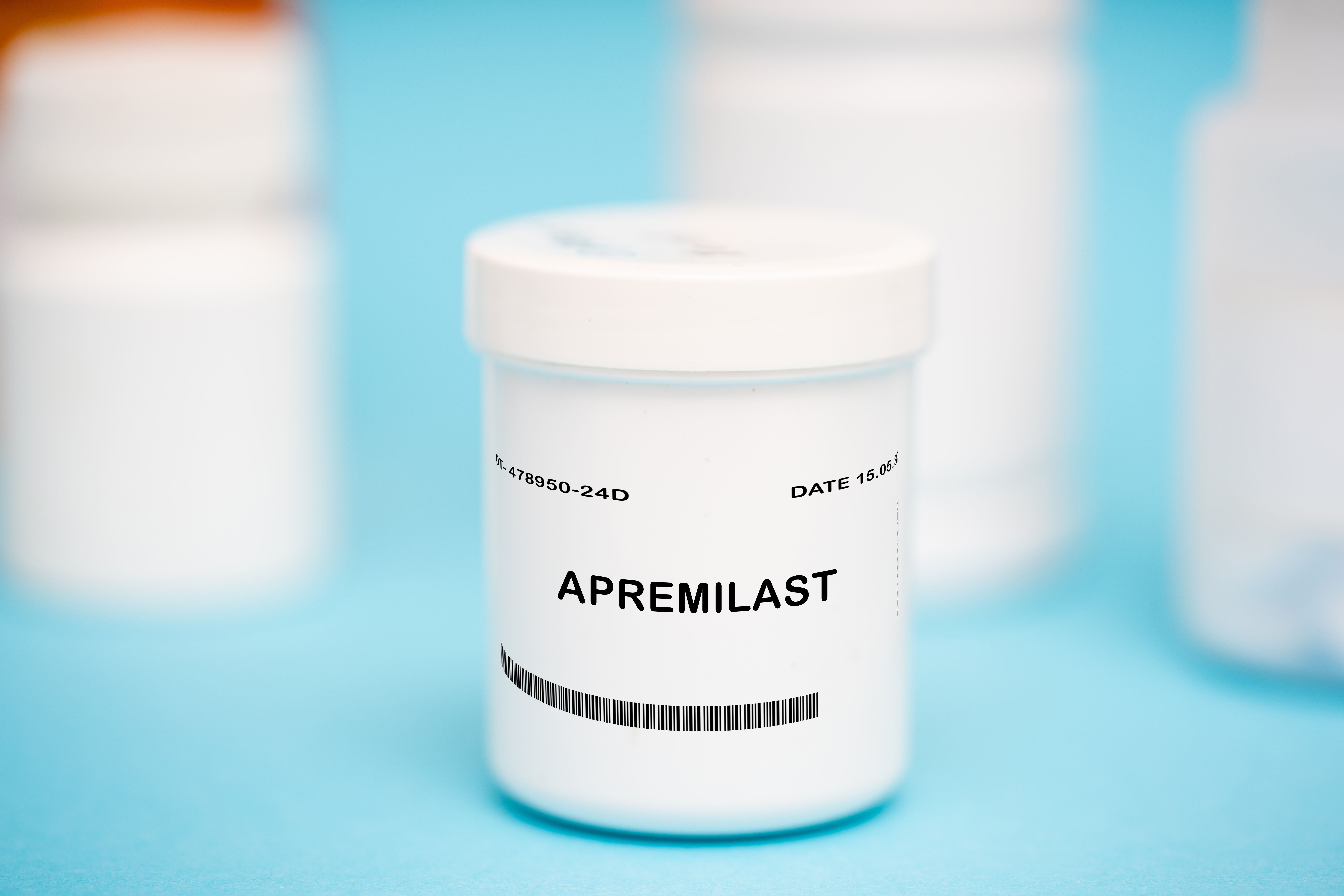- General Dermatology
- Eczema
- Alopecia
- Aesthetics
- Vitiligo
- COVID-19
- Actinic Keratosis
- Precision Medicine and Biologics
- Rare Disease
- Wound Care
- Rosacea
- Psoriasis
- Psoriatic Arthritis
- Atopic Dermatitis
- Melasma
- NP and PA
- Skin Cancer
- Hidradenitis Suppurativa
- Drug Watch
- Pigmentary Disorders
- Acne
- Pediatric Dermatology
- Practice Management
Consequences of Delayed Apremilast Treatment in Patients with Mild to Moderate Psoriasis
A new study suggests patients with psoriasis may experience exacerbated disease burden waiting to initiate systemic treatment.
luchschenF/AdobeStock

Researchers explored early vs late initiation of apremilast (Otezla) in patients with psoriasis to assess factors associated with earlier apremilast initiation, determine characteristics of apremilast initiators, and evaluate disease burden before apremilast initiation.
Strober at al presented their findings in a poster at the Maui Derm Hawaii 2024 conference in Wailea, Hawaii.1
In a retrospective observational analysis of electronic medical records, the team looked at the data of 3,589 csDMARD-naive adults in the US. The patients studied had limited skin involvement, with a mean body surface area [BSA] involvement of 6.4%. The mean age of the patients was 52 years.
The patients also:
- had a psoriasis diagnosis and a subsequent BSA value between 1% and 10%
- initiated apremilast at or after the index date and between 2014 and 2022
- were not taking other systemic medications for psoriasis at the apremilast initiation date
- had no prior evidence of psoriatic arthritis diagnosis
- had ≥365 days of baseline data
Strober et al cited the International Psoriasis Council (IPC)’s recommendation for a psoriasis treatment approach that considers BSA, involvement in special areas, and treatment history when determining whether patients are candidates for topical or systemic treatment.2
Among the researchers’ findings were the determinations that late initiators waited approximately 16 months to initiate apremilast, and that their average BSA increased 52.1% prior to initiation. Physicians tended to wait until patients had higher BSAs before initiating apremilast, even with early initiation. Men and patients older than 65 were less likely to initiate early.
Additionally, late initiators experienced more topical cycling than early initiators, with 6.9% having used 10 or more topical treatments, vs 1.5% for early initiators.
These results suggest that “real-world patients with psoriasis may experience exacerbated disease burden waiting to initiate systemic treatment,” the study authors wrote.
The study was funded by Amgen, Inc.
Regarding previous research on mild to moderate psoriasis, coauthor Linda Stein Gold, MD, earlier told Dermatology Times, “Contrary to popular belief, localized psoriasis is not easier to clear than more diffuse disease.
“In fact, localized psoriasis can be equally if not more challenging to treat [than diffuse disease] and very difficult to get under control. It is also important to keep in mind that even mild disease can have a profound impact on the patient’s quality of life.”
She cited a 2016 study comparing disease-associated cytokine expression in the skin between mild and severe psoriasis. Paradoxically, researchers found that mild psoriasis was characterized by higher numbers of T-cells in skin lesions, higher interleukin (IL)-17A expression, and stronger expression of the core psoriasis transcriptome.
References
- Strober B, Stein Gold L, Gisondi P, et al. Waiting to initiate apremilast: evidence of disease burden and topical cycling in mild to moderate psoriasis in real-world clinical practice. Poster presented at: Maui Derm Hawaii 2024; January 22-26, 2024; Wailea, Maui, HI.
- Horner ME, Orroth KK, Ma J, Duan Y, Cordey M. Redefining disease severity with special area involvement and reflecting on treatment patterns in a real-world psoriasis population. Dermatol Ther (Heidelb). 2024;14(1):187-199. doi:10.1007/s13555-023-01065-0
- Petrou I. Solve the challenges of mild to moderate psoriasis. Dermatology Times. January 25, 2022. Accessed February 9, 2024. https://www.dermatologytimes.com/view/solve-the-challenges-of-mild-to-moderate-psoriasis
